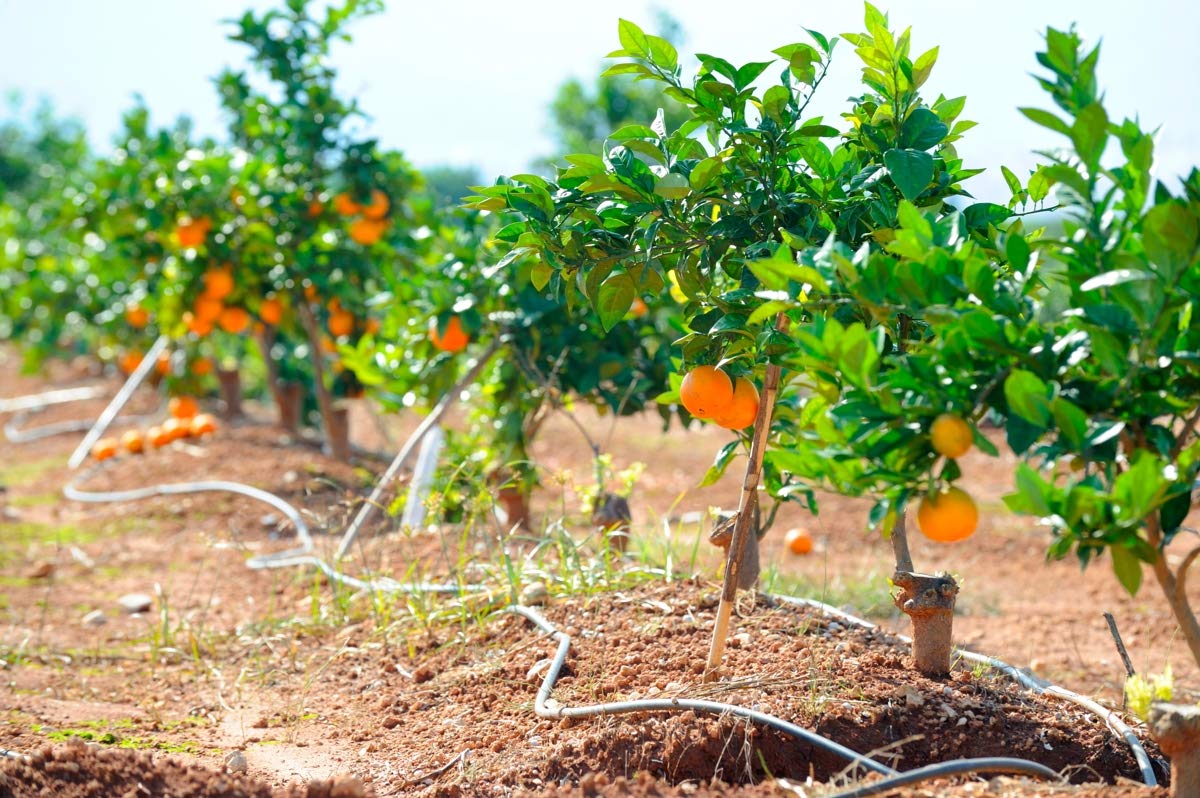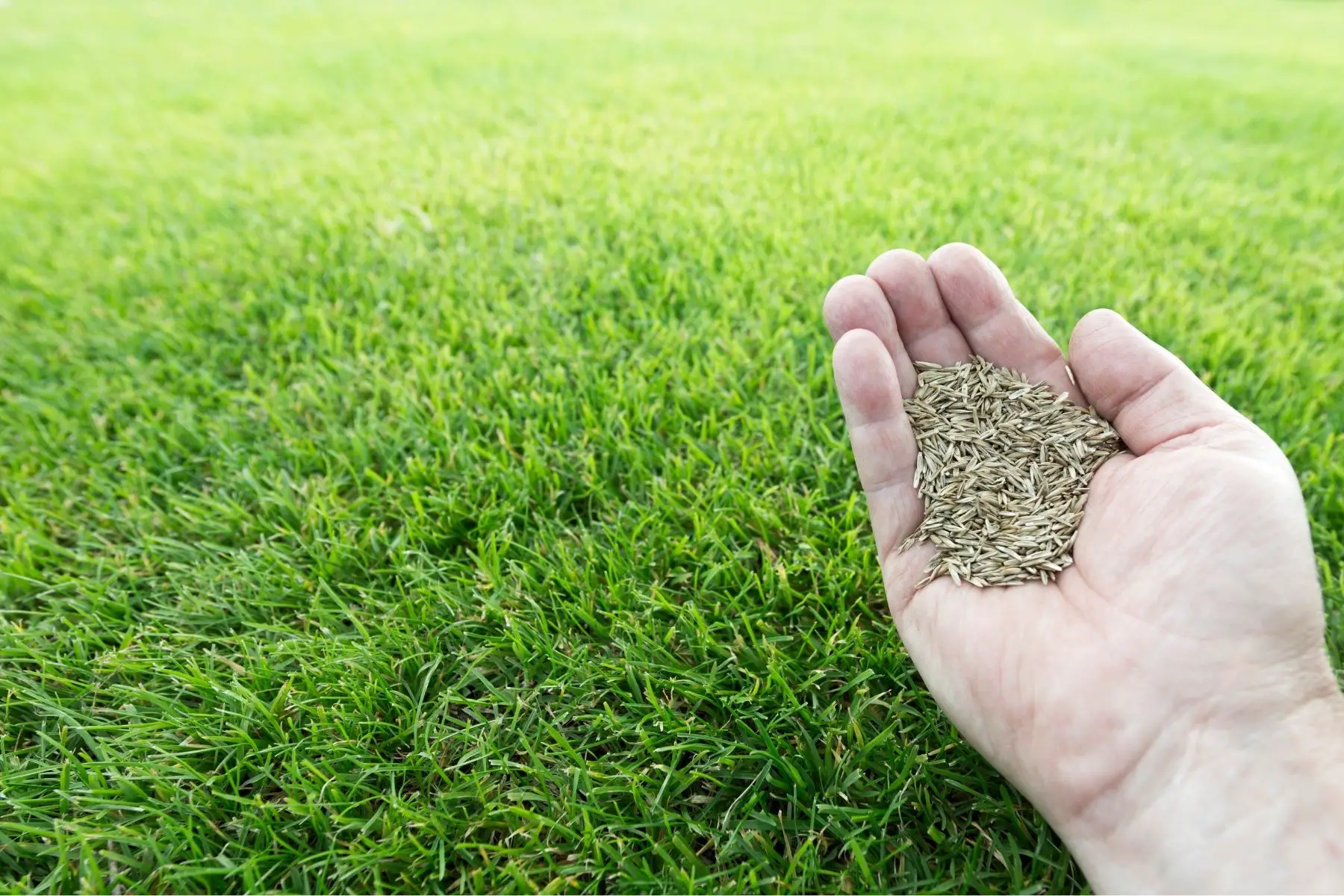Home>Gardening Techniques>Plant Care>How Long Do Orange Trees Take To Grow


Plant Care
How Long Do Orange Trees Take To Grow
Modified: January 22, 2024
Learn about orange tree growth and care with our guide. Find out how long it takes for orange trees to reach maturity and get tips on plant care.
(Many of the links in this article redirect to a specific reviewed product. Your purchase of these products through affiliate links helps to generate commission for Chicagolandgardening.com, at no extra cost. Learn more)
Table of Contents
Introduction
Welcome to the world of orange trees! Whether you’re a seasoned gardener or an aspiring plant enthusiast, understanding the growth process of orange trees is essential to successfully cultivating these beautiful and fruitful plants. From tiny seedlings to mature trees laden with juicy oranges, the journey of an orange tree is a marvel to behold.
In this article, we will explore the fascinating world of orange tree growth. We will dive into the various factors that influence their growth, the different stages of their development, and the time frame it takes for an orange tree to reach maturity. We will also provide some tips on how to accelerate the growth of your orange trees. So, grab your gardening gloves and let’s embark on this orange tree adventure!
Orange trees, scientifically known as Citrus sinensis, are popular fruit-bearing trees that belong to the Rutaceae family. They are native to Southeast Asia but are now cultivated in many countries around the world. These evergreen trees not only provide delicious citrus fruits, but they also add beauty to gardens and landscapes with their glossy leaves and fragrant blossoms.
Orange trees are known for their resilience and adaptability, making them suitable for a wide range of climates. However, their growth can be influenced by various factors such as climate, soil conditions, sunlight, water, and nutrients. Understanding these factors is crucial for ensuring optimal growth and a bountiful harvest.
Throughout their growth journey, orange trees go through distinct stages, starting from seed germination and culminating in mature tree production. Each stage has its unique requirements and characteristics. By understanding these stages, you can provide the necessary care and support needed for your orange trees at each step of their growth.
So, if you’re ready to embark on an orange tree growing adventure, let’s delve deeper into the factors that affect orange tree growth, the stages of their development, and the timeline it takes for these trees to reach their full potential.
Factors Affecting Orange Tree Growth
Several factors play a crucial role in the growth and development of orange trees. Understanding these factors will help you create an ideal environment for your orange trees to thrive. Let’s explore the key factors that influence the growth of orange trees:
- Climate: Orange trees thrive in warm climates with temperatures between 55°F and 85°F (13°C and 29°C). They require a frost-free period to grow and produce fruits successfully. Extreme cold or heat can stress the tree and hinder its growth.
- Soil Conditions: Orange trees prefer well-draining soil with a pH level between 6 and 7.5. The soil should be rich in organic matter and have good water holding capacity. Testing your soil and amending it with nutrients and organic matter can help create an optimal growing environment for your orange trees.
- Sunlight: Orange trees need plenty of sunlight to produce healthy leaves and fruits. They require a minimum of 6 to 8 hours of direct sunlight per day. Insufficient sunlight can result in weak growth and poor fruit production.
- Water: Adequate water is crucial for the growth of orange trees, but overwatering can lead to root rot. The frequency and amount of watering depend on various factors such as climate, soil type, and tree size. It’s important to maintain a balance and provide sufficient water without waterlogging the soil.
- Nutrients: Orange trees require essential nutrients for healthy growth. Nitrogen, phosphorus, and potassium are the primary macronutrients needed in relatively large amounts. Micronutrients like iron, zinc, and manganese are also important. Fertilizing your orange trees at the right time and using appropriate fertilizers will provide them with the necessary nutrients.
- Pests and Diseases: Pests like aphids, scales, and mites, as well as diseases like citrus canker and citrus greening, can significantly impact orange tree growth. Regular monitoring, proper sanitation, and timely treatment can help prevent and manage pest and disease issues.
By considering these factors and making the necessary adjustments, you can create the ideal growing conditions for your orange trees. Providing optimal climate, suitable soil conditions, ample sunlight, proper watering, adequate nutrients, and effective pest and disease management will promote healthy and vigorous growth.
Growth Stages of Orange Trees
Orange trees progress through several distinct stages of growth, each with its unique characteristics and requirements. Understanding these stages will help you provide the necessary care and support for your orange trees at each step of their development. Let’s explore the different growth stages of orange trees:
- Seed Germination: The growth journey of an orange tree begins with seed germination. Under the right conditions of warmth and moisture, the seed absorbs water and begins to sprout. This stage can take anywhere from a few days to a few weeks.
- Seedling Stage: Once the seed germinates, it develops into a seedling. At this stage, the seedling has a single stem with a pair of small, rounded leaves. It relies on the energy stored in the seed for initial growth. This stage typically lasts for several weeks.
- Juvenile Stage: As the seedling continues to grow, it enters the juvenile stage. The tree starts developing branches, and the leaves become larger and more elongated. However, the tree is not yet mature enough to produce fruits at this stage, which can last for a few years.
- Pre-Flowering Stage: As the orange tree reaches maturity, it enters the pre-flowering stage. During this stage, the tree undergoes a transformation, producing small, white, aromatic flowers. These flowers serve as the precursors to the fruiting stage and attract beneficial pollinators.
- Fruiting Stage: The fruiting stage is the most rewarding and exciting stage for orange tree owners. After successful pollination, the flowers develop into small, green fruits. Over time, these fruits grow and change color, eventually reaching their full ripeness. The duration of the fruiting stage depends on the specific orange tree variety and environmental conditions.
- Maturity: Once an orange tree reaches maturity, it is capable of producing a bountiful harvest of delicious oranges. Mature trees have a well-established root system, sturdy trunk, and abundant foliage. With proper care and maintenance, a mature orange tree can continue to produce fruits for many years.
Understanding the growth stages of orange trees allows you to anticipate and cater to the specific needs of your trees at each phase. Providing appropriate care, such as regular pruning, fertilization, and disease management, will ensure optimal growth and maximize fruit production.
Time Frame for Orange Tree Growth
The time frame for orange tree growth can vary depending on several factors, including the specific variety of orange tree, environmental conditions, and cultural practices. While there is no fixed timeline, understanding the approximate duration of each growth stage can give you an idea of what to expect. Here is a general overview of the time frame for orange tree growth:
- Seed Germination: From the moment you plant an orange tree seed, it typically takes around 1 to 3 weeks for the seed to germinate and sprout. During this time, it’s important to keep the soil moist but not waterlogged to encourage healthy germination.
- Seedling Stage: Once the seedling emerges from the soil, it will enter the seedling stage, which typically lasts for several weeks to a couple of months. During this stage, the seedling focuses on establishing a strong root system and developing its first few leaves.
- Juvenile Stage: As the seedling grows into a young tree, it enters the juvenile stage, which can last anywhere from 2 to 5 years, depending on the variety. The tree will continue to develop branches, leaves, and a more robust root system during this time.
- Pre-Flowering Stage: At around 3 to 5 years of age, the orange tree reaches the pre-flowering stage. During this phase, the tree starts to produce small, fragrant flowers. The duration of the pre-flowering stage can vary, but it typically lasts for a few months.
- Fruiting Stage: After successful pollination, the flowers transform into small green fruits, signaling the start of the fruiting stage. The time it takes for orange fruits to fully develop and ripen can range from 6 to 12 months, depending on the variety. Some varieties may even have multiple fruiting cycles throughout the year.
- Maturity: Once an orange tree reaches maturity, usually after 5 to 10 years, it will continue to produce fruits for many years to come. With proper care and maintenance, a mature orange tree can live for several decades and provide a consistent harvest of delicious oranges.
It’s important to note that these time frames are general guidelines, and actual growth times can vary based on environmental conditions and cultural practices. Factors such as the climate, soil quality, sunlight exposure, and proper care techniques can all influence the growth rate of your orange trees.
By understanding the time frame for orange tree growth, you can have realistic expectations and plan accordingly. Patience, consistent care, and proper nurturing will ensure that your orange trees reach their full potential and provide you with a bounty of fresh, juicy oranges.
Tips for Accelerating Orange Tree Growth
If you’re eager to see your orange trees thrive and bear fruits sooner, there are several tips and techniques you can employ to accelerate their growth. Although it’s important to note that orange trees have their own natural growth rhythm, these practices can help create a favorable environment for faster growth. Here are some tips to consider:
- Optimal Planting: When planting your orange tree, choose a sunny spot with well-draining soil. Proper soil preparation, including adding organic matter and ensuring good drainage, can promote healthy root development and nutrient uptake.
- Appropriate Irrigation: Water your orange trees regularly, providing deep waterings rather than frequent shallow ones. This helps encourage deep root growth and enhances the tree’s overall resilience. However, be cautious not to overwater, as it can lead to root rot.
- Pruning and Training: Pruning your orange trees promotes new growth and removes any dead, damaged, or diseased branches. Trim the branches lightly during the early stages to encourage a bushier growth habit. Proper training techniques, such as staking young trees or using trellises, can also help accelerate growth.
- Fertilization: Providing your orange trees with balanced fertilizers at the right time can supply the necessary nutrients and stimulate healthy growth. Choose a fertilizer specifically formulated for citrus trees and follow the recommended application rates for optimal results.
- Protection from Pests and Diseases: Regularly monitor your orange trees for any signs of pests or diseases. Promptly address any issues with insecticides, organic pest control methods, or disease management practices to prevent damage and promote unhindered growth.
- Consistent Care: Orange trees thrive on consistency. Provide a stable and favorable environment by maintaining consistent watering, fertilization, and pest control practices. Avoid drastic changes in care routines or environmental conditions, as they can stress the trees and hinder growth.
- Mulching: Apply a layer of organic mulch around the base of your orange trees to conserve soil moisture, regulate soil temperature, and suppress weed growth. Mulching also enriches the soil as it breaks down, providing beneficial nutrients to the roots.
- Proper Sunlight Exposure: Ensure that your orange trees receive adequate sunlight, as it is crucial for photosynthesis and overall tree health. If your trees are in a shaded area, consider pruning nearby trees or using reflective materials to redirect sunlight to your orange trees.
While these tips can help accelerate orange tree growth, keep in mind that patience is still essential. Although the growth process may be expedited, orange trees follow their natural growth cycle and may take some time to reach maturity and produce fruits. Consistency, proper care, and a nurturing environment are key to ensuring healthy and rapid growth of your orange trees.
Conclusion
The growth of orange trees is a fascinating journey that requires careful attention and proper care. Understanding the factors that influence their growth, the stages they go through, and the time frame for their development is essential for successfully cultivating these beautiful and fruitful trees.
Factors such as climate, soil conditions, sunlight, water, and nutrients play a crucial role in the growth of orange trees. By creating an optimal environment that meets these requirements, you can ensure healthy and vigorous growth.
Orange trees progress through several growth stages, beginning with seed germination, followed by the seedling and juvenile stages. They then transition into the pre-flowering stage, which leads to the highly anticipated fruiting stage. With time and proper care, orange trees reach maturity and continue to produce bountiful harvests year after year.
While there is no fixed timeline for orange tree growth, understanding the approximate duration of each growth stage provides a useful framework. Patience, consistent care, and appropriate cultural practices, such as pruning, fertilization, and pest control, are essential for accelerating growth and maximizing fruit production.
By following the tips outlined in this article, you can create an ideal environment for your orange trees to thrive and reach their full potential. Whether you’re a hobbyist gardener or a dedicated plant enthusiast, the joy of seeing your orange trees grow, blossom, and bear fruits is truly rewarding.
So, roll up your sleeves, put on your gardening gloves, and embark on your orange tree growing adventure. With knowledge, perseverance, and a deep love for plants, you’ll have the satisfaction of watching your orange trees flourish and enjoy the abundant harvest of delicious oranges they provide. Happy growing!








